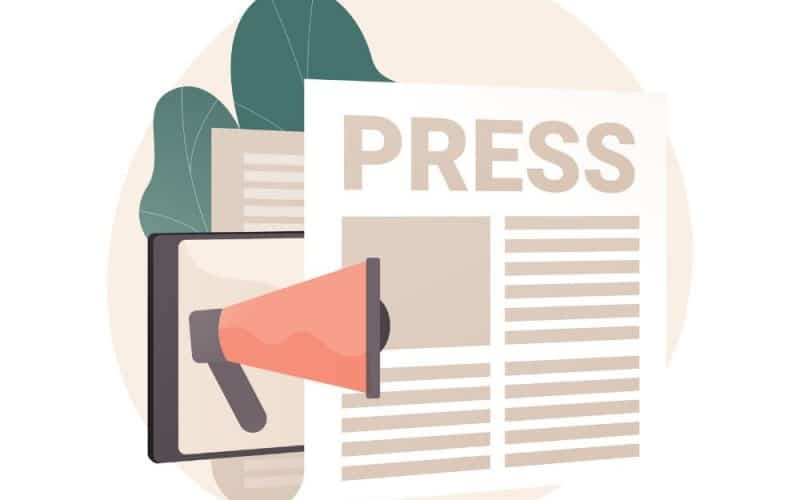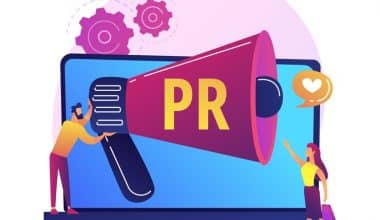There are hardly any arguments on the importance of press releases, and rightly so, because everyone agrees that they are important. Be you a news agency or a business organization, press releases are one of the few ways you can control your own narrative before others do you the favor. But how do you send a press release?
In a media landscape where journalists are constantly swamped by dozens of news pitches daily, how do you make your press release stand out? How do you ensure that it doesn’t suffer at first glance and end up in the bin?
Key Takeaways
- A press release is an official statement (written or recorded) that an organization issues to the news media and beyond.
- Press releases are a crucial aspect of PR strategies.
- A steady flow of information from your company (especially positive news) helps you stay relevant and attract potential customers.
- The goals are to attract media attention, raise public interest, and sell as many tickets as possible.
- Proper press release templates help you control your brand’s narrative, giving you structure and allowing you to communicate clearly.
What Is A Press Release?
A press release is an official statement (written or recorded) that an organization issues to the news media and beyond. Whether we call it a “press release,” a “press statement,” a “news release,” or a “media release,” we’re always talking about the same basic thing.
Most press releases are succinct at just a page long – two pages tops. Ultimately, companies want to provide enough information so that news outlets have sufficient material for publishing their own stories about whatever the company is announcing in the release.
While the heading should contain action verbs, the first paragraph should answer the “who,” “what,” “why,” and “where.” The press release should also contain understandable language and a quote.
Standard Press Release Template
Press releases are a crucial aspect of a public relations strategy. A steady flow of information from your company (especially positive news) helps you stay relevant and attract potential customers. Your press release must be concise and stick to the facts. While the tone is formal, you can use images, statistics, numbers, and quotes to keep readers engaged.
Press Release Formatting
No matter what type of text you need to write, it is always an advantage to have a format. Below you will find a format of the basic building blocks your press release should contain.
- Date: The date you send your press release to the news media.
- Headline: Write a short, catchy headline that whets the recipient’s appetite to read more, 8 to 9 words max.
- Introduction: A razor-sharp and concise summary of your news. Aim for 3 lines. Think who, what, how, and why.
- Body text: Expand your news with the most important information. Here you can advantageously insert suitable quotations. Furthermore, it is a good idea to divide the text into short sections with corresponding subheadings.
- Contact information: Name of contact person, telephone number, and link to your website.
The Inverted News Pyramid
News agencies often recommend that you use the inverted news pyramid when writing a press release. The inverted news pyramid is a method that can help you structure the content of your press release in such a way that the text starts with the most important information.
Imagine an inverted pyramid with the tip pointing down and the wide part at the top. Many readers just skim a text and quickly lose patience. The purpose of the inverted news pyramid is to catch the recipient’s eyes and attention even before they have spent a minute reading the text.
If you follow the inverted news pyramid, your text should be structured like this:
- The most important part of the story/news
- Expand the story
- Additional details
Remember Visuals and Photos
The inboxes of the news media’s editorial offices are overflowing with press releases and everything else every single day of the year. Your goal is to compose a press release that captures the attention of both the editors and your target audience. A captivating image can help you increase the chances of your press release being pulled out of the inbox and published.
The optimal image for your press release is an image that captures attention, supports your story, and seems authentic. If you have taken a really good picture of yourself from an event in your company, a customer who uses your product, or the people who are involved in the news, you should use it.
Stock images can also be used, but the risk with them is that they can be hard to relate to or simply don’t create a sense of authenticity.
Consider the Target Audience
When you send your press release to a media outlet, you should have the target audience in mind. The chance that they will pick up your press release is significantly greater if your news is angled in a way that is relevant to their target group. If necessary, take a look at other press releases the media has previously published, to get a better sense of the tone and angle they might prefer.
Credibility is Important
If you include quotes in your press release, which is always a good idea, you should make sure the source you cite is reliable. Should the news outlet publish your press release and later discover that your quotes or other information were not truthful, it will be difficult to get them to publish other news that you want to share. Credibility in all your marketing is important as it can help you strengthen your brand trust.
Send From a Professional E-mail Address
When you need to send press releases and otherwise communicate with the media, customers, and partners, a professional email on your own domain will increase your chances of appearing professional and credible.
Let’s assume that you receive e-mails from two different companies or associations, namely companyname@gmail.com and press@companyname.uk. The last of these will be perceived by most as the more reliable and legitimate of the two. Therefore, important communications, such as your press release, are also more likely to be answered when you send from an email address with your own domain.
The checklist below examines in detail how to craft the perfect press release:
Tips For Writing A Press Release
How To Send A Press Release
Before you send a press release, ensure the following:
#1. Ensure your press release is newsworthy
Make sure your announcement is actually newsworthy in the eyes of journalists and the public. This means that whatever you’re sharing is relevant and/or useful to the interests of a segment of the audience of a particular media outlet.
It’s something they need to know if they follow your brand, industry, or field. It’s something that actually matters outside the organization you’re pitching for.
Ask yourself these two questions:
- Is my news something the public will care about?
- Is it presented in a way that will get people interested?
If it’s not, it might be worth waiting until you have something that actually is newsworthy or you risk making a bad first impression with the media contacts you submit your press release to.

#2. Ensure your press release is written correctly
Why is this important?
By following a standard press release format, you’re ensuring that a journalist knows how to find what they’re looking for in your release, and allows them to quickly determine if they want to cover your announcement. It also shows them that you’re a seasoned PR pro who knows the ins and outs of a press release, and signals that you’re likely easy to work with.
Cassie Scher, Nahigian Strategies
Here’s what to include in your press release:
- Headline
- Subheader / Lead
- Dateline
- Body
- Quote
- Company info
- Logo
- Media contact information
And finally, make sure your press release doesn’t contain any grammatical errors or spelling mistakes. A tool like Grammarly (or even your computer’s spell checker) can help you spot any slip-ups.
How to send a press release
General Tips For Pitching Your Press Release
- Be prudent: Avoid issuing press releases about every move your company makes. That might cause journalists to tune out when you have real news to announce.
- Craft a compelling headline: Journalists are busier than ever, if you can get straight to the point in the headline, this will save them time. Of course, you’ll want to support it with strong content in the body of the release as well, but if they don’t make it past the headline, it won’t matter.
- Be reachable: Make sure the primary contacts and quoted sources are in the office the day the release is sent. If a journalist has a question or needs a comment, they’ll need that now – not days later.
- Use numbers and data: If you have research to cite, include it. If you don’t have your own research, you can cite someone else’s with proper credit. Brands rarely include numbers unless it’s a quarterly report – and that’s a missed opportunity. Look for ways to incorporate more numbers such as statistics and figures in your releases.
- Draft strong quotes: Write quotes that sound like something a person would actually say. And don’t include too many quotes, one or two should be plenty.
- Pay attention to detail: Proofread your press release before you send it to ensure all the information is correct. Pay close attention to key details, such as dates, metrics and the spelling of brand or company names. You may also ask a coworker or someone you trust to proofread the press release before you send it.
- Brief is better: You can link to additional information, but the job of the release is to get a journalist’s attention. Keep it short and focused.
Who Is Responsible For Writing Press Releases?
Your company may have a public relations team to write and distribute your press releases. If you don’t have a PR team, you can syndicate your press release through a service, which will then send it to reporters, journalists, bloggers, influencers, and news outlets.
As the media may receive hundreds of press releases each week, it is crucial to make your press release stand out. You can do this by:
- Choosing a strong angle for your audience
- Writing a killer headline and lead
- Sticking to the right format
Most importantly, your press release will stand out by picking something interesting to write about. The media won’t want to read about what happens during your weekly team meetings. Instead, consider writing a press release when something new and out of the ordinary occurs.
Why are Press Releases Important?
Press releases are important because they can generate publicity and raise awareness about a product, brand, organization or event. Publicists use press releases to attain media coverage, which can help build credibility and improve a brand’s image.
If a media outlet chooses to create a story based on a press release, the search engine optimization (SEO) of the organization, brand or event covered may increase. This can make it easier for people to find out more information when they look for the organization, brand or event using a search engine. Finally, press releases can increase interest from a media outlet’s audience.
This can generate more leads and sales for the organization that is being featured by the media.
Recommended Articles
- Content Team: How to Build & Grow an Effective Content Team
- How To Write A Compelling Headline in 9 Steps
- 7 Elements of Storytelling: How I Connect with my Audience
- BROADCAST MEDIA: Meaning, Types and Examples
- What Is Creative Content? All You Need 2024
- How Much Do Social Media Influencers Make? Income Breakdown






